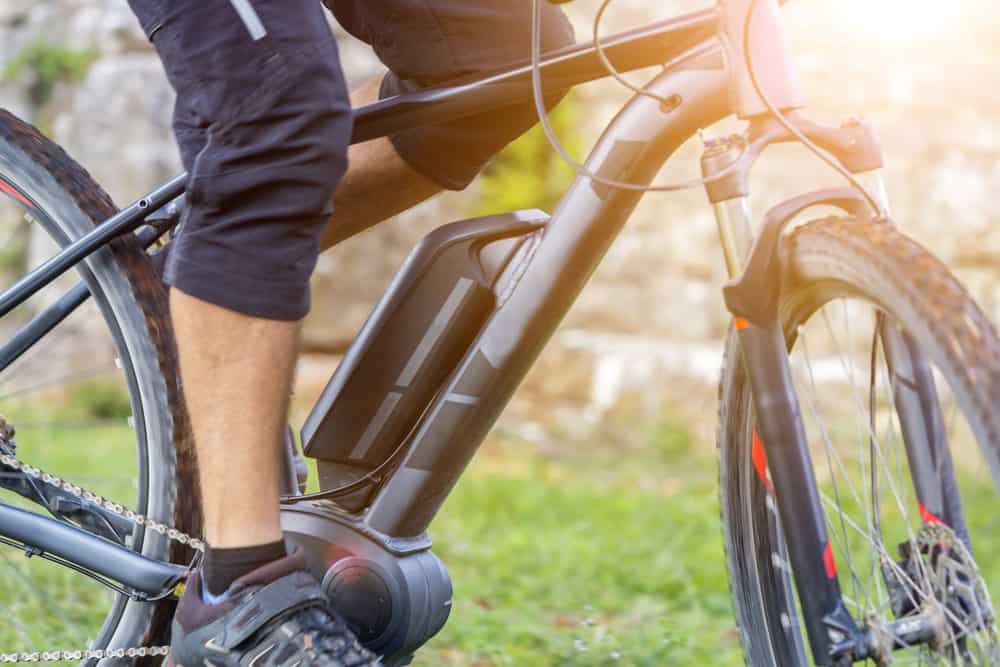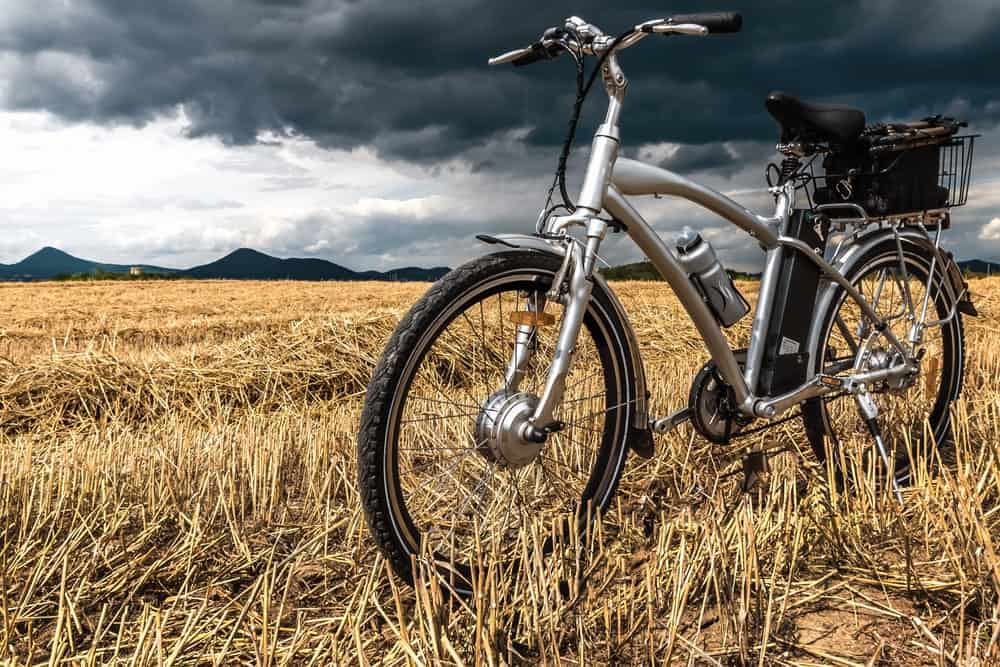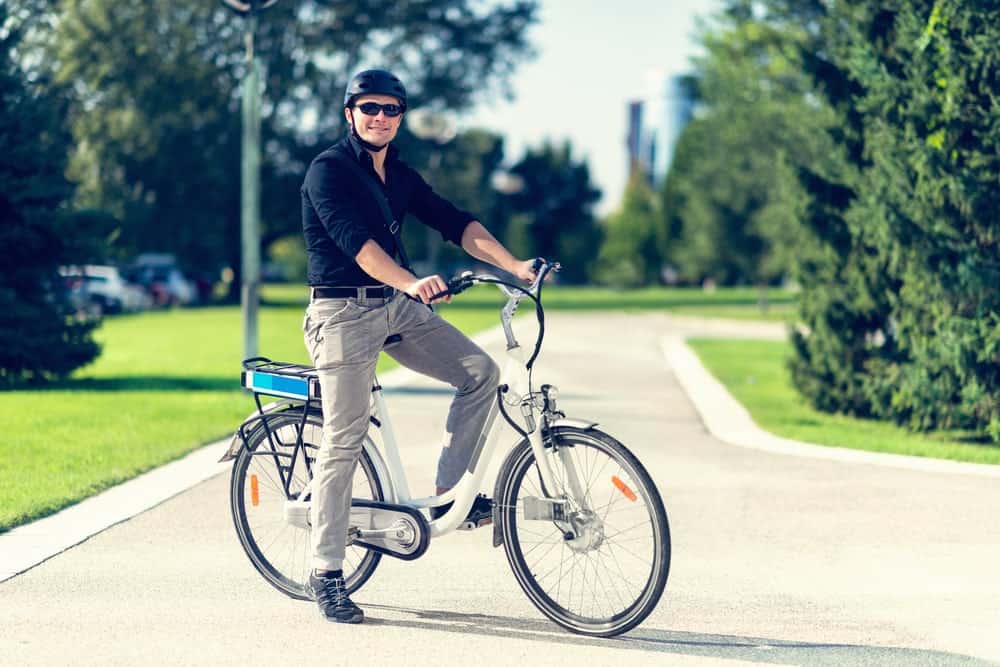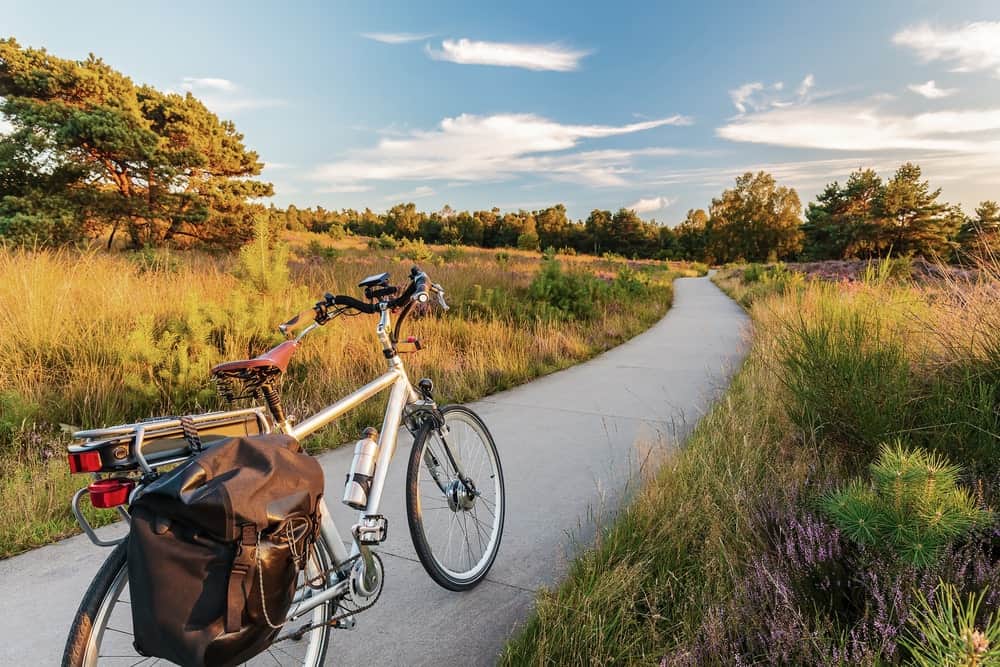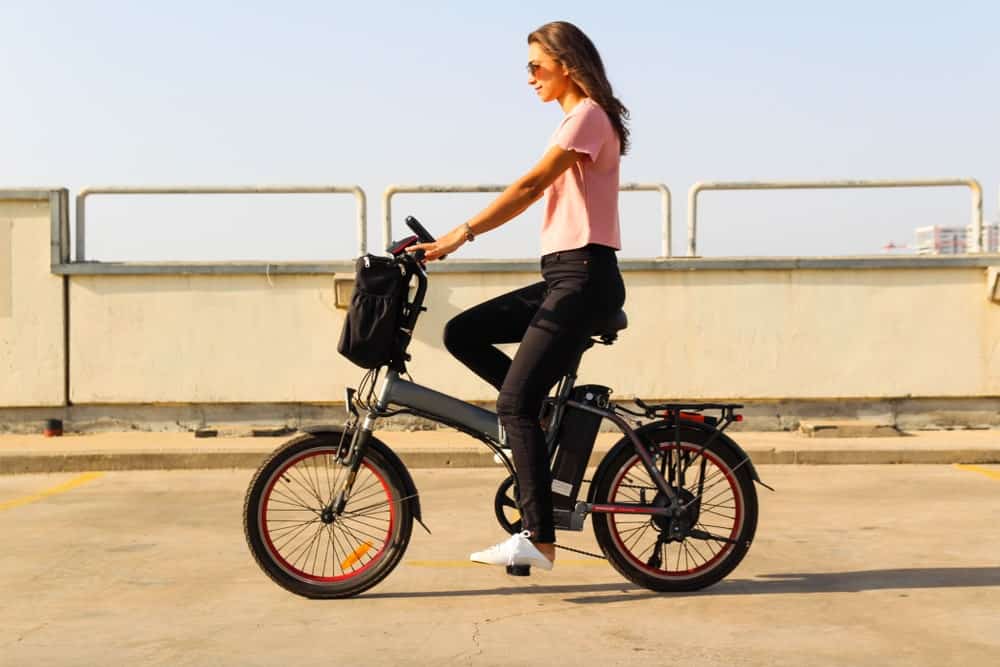Although I’ve been an avid cyclist for nearly twenty years, I’ll never forget the first time I saw an electric bicycle. I was living as an expat in China, where bike commuting is still fairly common.
Each morning, I heard a tiny little put-put, sputter-sputter sound round the corner near my apartment. By the time I could look out the window, no one was there.
Finally, one morning, I waited and managed to catch a glimpse – it was an older man riding what looked like a regular bicycle but sounded more like a motorbike. Pedaling away, he quickly disappeared around the corner.
He was riding an e-bike!
Growing in popularity across the globe, e-bikes have entered the mainstream market and are no longer simply an engineering hack by a resourceful commuter tinkering in the basement.
Whether you’re in Europe, the United States, China, or beyond, you’re bound to see people riding e-bikes. Many cities have even started to offer convenient e-bike rentals for tourists and commuters, alike.
Indeed, e-bikes are stylish. E-bikes are efficient. E-bikes are in demand.
While an e-bike does not eliminate your need to work and pedal on the bike, it does provide assistance, making your ride less challenging than it would otherwise be on a traditional bike.
This makes it a great option for commuters, looking to get a bit of exercise on their way to work or to ease their impact on the environment by avoiding daily automobile use. You can still get moderate exercise, without straining and sweating too much on your way to the office.
It can not only save you effort on your commute, but it also saves you time.
If your route requires you to climb significant hills, for example, an e-bike can prove a time-saver as it helps you power up those hills much more quickly than if you were to rely fully on your own physical effort.
But how do you select the right e-bike for you? Can you find an e-bike in any style bicycle? Do e-bikes still provide good exercise?
If you’re looking to purchase a new e-bike, or if you’d simply prefer to configure your traditional bike to an electric model, this guide will help you select the most appropriate electric bicycle option for you.
E-Bike Class Options
If you’re looking to delve into the world of e-bike commuting, there are a number of options to choose from, depending on how much support from the motor you’re seeking.
Electric bicycles are divided into three different classes, each offering a different level of assistance. The regulations of these classes can vary slightly between North America and Europe.
These classes seek to govern how much assistance the motor is allowed to give you, specifically in terms of up to what speed will it provide you with assistance.
Most e-bikes will allow you to adjust your settings – receiving less assistance from each class if you desire – but the class designation and bike design does provide an upper limit to how much assistance the bike can provide.
Adjusting your settings can help you to preserve battery.
Be aware, electric bikes are technically motor-operated, or motor-assisted, vehicles.
As a result, more regulations for use of these bikes exist than traditional road or mountain bikes used for recreation.
Some e-bike classes may require you to have a license to operate, depending on where you live or where you will be riding your e-bike. Always check local regulations before using any class of e-bike.
In some cases, an age limit may be imposed for use of a particular class of e-bike.
Class One: Pedal Assist
A pedal assist, or Pedelec, e-bike is probably the most common type of e-bike you will find in both the U.S. and Europe. It allows you to pedal your bike normally while aiding you in your efforts as the motor increases the power provided by the rear wheel of your bike.
To receive the assistance of the motor, however, you do need to actually pedal the bike. It is not a motor bike, allowing you to rest or coast while motoring around town.
If you’re looking to go faster with less effort, then a pedal assist e-bike might be a good option for you. These bikes are also a good option for those who ride over significant hills, particularly on a daily commute, as it helps you to climb more efficiently and with less effort.
European designs will typically limit you to assistance only up to 15 mph (25 kph), while U.S. designs allow for assistance up to 20 mph under the Class One option.
Class Two: Throttle Only
If you’re looking for an e-bike that does not require you to pedal all the time, then a throttle only design may be the best choice for you. These bikes allow you to pedal your bike normally if you choose, but they do not require it.
A throttle-only e-bike can run without your pedaling.
If you elect to utilize the motor’s benefits, you will crank the throttle to engage the motor.
Most bikes of this classification will provide the option to vary how much power is provided by controlling use of the throttle.
Throttle-only bikes are heavily regulated in Europe and are only allowed for use when pedaling, but you will find less regulation in the U.S., allowing for use of the motor whether the rider is pedaling or not.
Pedaling will help to extend the life of your battery, so if you have a longer commute or plan to ride further, be sure not to just coast along.
Maximum speed of assistance for this bike is up to 20 mph.
Class Three: Speed Pedelec / Pedal Assist (up to 28 mph)
Operating similarly to a Class One Pedal Assist e-bike in that you will need to pedal to use the motor, a Class Three Pedal Assist e-bike allows the rider to receive assistance from the motor up to speeds of 28 mph.
It is the fastest e-bike design that is considered still a bicycle and able to be legally operated without the requirement for a driver’s license. Some localities, however, may actually consider this design to be a motor bike and may require licensure.
Use of this e-bike is limited to those ages 17 or older. Helmets are required for operation of this class of e-bike.
Types of E-Bike Motors
In addition to the variance provided in speed or pedal assistance options by various class designations and designs, electric bicycles also offer options in terms of location of the motor.
Each of these designs offers its own benefits and considerations.
Mid-Drive
A mid-drive, or center drive, e-bike motor design requires the rider to pedal at all times in order to receive assistance from the motor. It is placed at the center of the bike’s frame and allows the rider the most efficient and longest ride option of e-bike designs.
This motor location design is often preferred, as it is lightweight, which can be helpful for not impacting speed or ability to power up hills.
This motor location is appropriate for use on an e-bike used for a range of activities, from exercise to commuting, from mountain biking to road cycling.
Hub Motors
Hub motor e-bike designs locate the motor on either the front or rear hub, rather than the center of the bike frame.
- Rear Hub – A rear hub motor can be used on both pedal assist and throttle class designations, but they are typically used to convert a traditional bike design to an e-bike. They can be used on a range of bike styles and are not usually expensive, making it a consideration for those looking to convert their traditional bike to an e-bike to make a commute more efficient. Locating the motor on either the rear or front hub, rather than the center of the bike frame, can cause issues with steering and control, as the weight is not distributed evenly throughout the bicycle.
- Front Hub – A front hub design is usually used to convert a traditional bike to an e-bike and is not considered the most efficient e-bike option. It is usually used with a throttle design. Placing the motor on the front wheel often presents issues with traction and acceleration, which make it undesirable for many riders.
Battery Location and Range
Electric bicycles require a battery to power the motor. In the case of e-bikes, batteries are rechargeable and most designs use lithium ion batteries.
The type of battery and its capacity will impact how far a rider can travel while utilizing the electric motor without requiring a recharge of the battery.
Generally, the more you pedal, the longer your battery will last.
One drawback of needing a battery to power your e-bike is the weight it can add to your frame. For a cyclist looking to optimize their bike to be as lightweight as possible, an e-bike presents a challenge for this reason.
One reason e-bikes have grown in popularity in recent years, however, is because of innovation in battery design, presenting lighter weight options.
Just as it’s important to consider the location of the e-bike’s motor, it’s also important to consider location of the battery.
E-bikes have several options when it comes to location of the battery.
One common option is to use a cargo rack to mount your battery above your bike’s back wheel. While most bicycle frames will accommodate this placement option, it can cause weight-related issues with steering and control.
A rear-mounted battery will be most common on e-bikes that have been configured, rather than manufactured as e-bikes.
For manufactured e-bikes, the most common design is to place the battery on the bike’s front frame toward the crank area, making for better control and bike handling.
Types of e-Bikes
Most bicycle styles are available in e-bike models or they can be configured into an e-bike from their traditional model.
The following examples provide just a few of the options available to you as you contemplate your e-bike purchase.
Electric Road Bikes
Traditional road bikes are available in e-bike form, or you can convert your traditional road bike to an e-bike. This is often beneficial if you are looking to use your road bike for commuting purposes, not just for exercise or competition.
A pedal assist model will be a popular option when it comes to an electric road bike. They can help to alleviate some of the effort required to achieve and maintain faster speeds across longer distances, as well as help to aid you as you power up hills.
Most avid roadies, though, don’t want added weight on their bike frame, even if they’re looking for assistance from a motor, so be sure to look for a lightweight option.
Electric Mountain Bikes
Electric bike options aren’t just for the road – you can take them on the trails, too. Electronic mountain bikes tend to just have a front suspension, though, so they may not be appropriate for use on rougher, more technical trails.
But if you’re looking for a bit of an easier ride when riding on trails, then an electric mountain bike may be the choice for you.
Electric mountain bikes may also prove useful if you’re looking to take your trail bike to the streets.
Mountain bikes are cumbersome and difficult to ride on the road, as their gearing options are different from a traditional road bike, so the use of a motor assist may help if you’re looking to use this bike as a commuting option without needing to purchase a brand new bike.
Many electric mountain bike options, though, won’t be a great option for more rugged trails. For that, you’ll want to invest in a downhill electric mountain bike. These are designed with better suspension and can handle much more wear and tear.
Another potential option for off-road riding along the trails is the use of an electric fat bike.
Electric Hybrid Bikes
A performance-based hybrid between a road and a mountain bike in terms of both style and function, a hybrid bike is an excellent choice for both the recreational rider and the commuter, whether you’re looking for a motor assist or not.
Hybrid bikes can be purchased as a manufactured e-bike, as well as configured as such.
If you’re looking to ease your commute or make it more efficient (and perhaps a bit less sweaty!), then a hybrid e-bike may be a good option for your riding needs.
Electric Cruiser Bikes
Cruiser bikes, often seen used for casual rides along the boardwalk, also come in electric form. These bikes are good for very casual riders, as well as for the commuter.
They are often designed to be fashionable, as well as functional, and they can make a great choice for commuters, too.
Usually, you would elect to use an electric cruiser bike if you plan to use your bike for your commute and are looking to improve your speed or efficiency, as cruiser bikes are not known for offering either.
Electric Touring Bikes (Cargo E-Bikes)
If you’re into long rides – I mean, really long rides – then you’re likely to need a cargo bike or a touring bike. These bikes are designed for use on extended bike rides, such as a cycling trip across the country.
These bikes are popular for those in the bikepacking community. Touring, or cargo bikes, allow you to pack a lot of gear onto your bike, so as to avoid having to carry it on your back or in another vehicle.
Bikepackers, or touring cyclists, will often require equipment such as tents, sleeping bags, and food, to name just a few essential items.
Because these cyclists ride for long distances for days on end, an e-bike model can be an attractive option. These bikes can be manufactured as cargo e-bikes or you can configure your touring road bike to an e-bike model, depending on your budget and preferences.
These bikes aim to optimize your functionality and efficiency on long rides that require you to haul heavy loads.
An electric cargo bike can be a popular way to provide a delivery service in a larger city or other urban area.
Electric Folding Bikes
Popular among commuters, travelers, and city-dwellers, folding bikes may a great option for those looking for an efficient, but compact bike for their commute. These bikes simply fold away for easy storage when not in use.
Add to that a motor assist, and you have quite the efficient mode of transportation.
Electric Recumbent Bikes
As with most recreational rides, a recumbent bike can be configured to an electric model or you can purchase an electric recumbent bike already manufactured as such.
These don’t tend to make great commuter bike options, as they’re difficult and potentially dangerous to use on heavily trafficked roads, but they can make a great choice for those who ride paved, recreational trails, such as their local greenway park.





